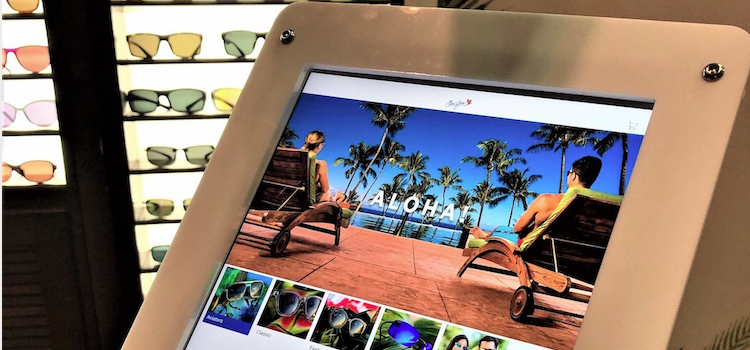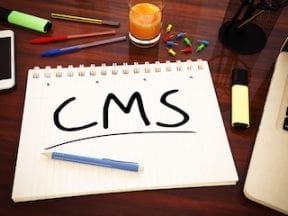
Physical pop-stores can help ecommerce merchants and consumers. Having fast, reliable internet at the event is key, as is providing access to devices (such as iPads) for browsing and buying.
Physical pop-up stores enable merchants to test new products and create in-person experiences for shoppers to try the merchandise and meet the staff. Pop-up shops are especially important for online-only sellers, to engage customers and promote continuity programs.
Pop-up stores are a familiar sight in malls and events, but adding a digital component is relatively new. I’ve just completed a series of pop-up experiences for my company and for merchant brands.
In this post, I’ll share my lessons and observations.
Pop-up Phases
There are typically three phases of a pop-up store.
Before the event. Attending an event, such as a music festival or a sporting match, provides access to a unique, relaxed audience. It’s also an opportunity to sell event-specific merchandise. If products in the pop-up store are available in advance online, merchants can capitalize on the buildup, and attendees can browse and choose products, either for home delivery beforehand or for pick-up while attending. A challenge in operating a physical pop-up store is product assortment and capacity. Running a digital campaign in advance helps merchants know which products will be hot, to plan.
The same principle applies if the pop-up is not at an event. An example is testing a local market before signing a long-term lease. Marketing online to local consumers in advance builds awareness and curiosity. Key features include buy online and pick-up at the event, or reserve online for pick-up.
Regardless, a microsite dedicated to the pop-up store is easier for shoppers, versus burying the details of the event in your larger site.
During the event. Continue marketing the pop-up store during the event. It will drive physical traffic and, also, encourage prospects to shop your entire online inventory.
Presenting this entire, endless aisle of inventory at the pop-up should include an easy and intuitive purchase experience — tap and buy. It could also be a line buster, as attendees can buy online if the physical store is busy.
However, don’t force attendees through a typical online checkout flow — such as entering a name, address, and credit card number — on a shared computer. A much better approach is to allow them to select items on a shared device, then send it to their phone for completion. This uses the payment methods stored on their phone and otherwise expedites the process.
Throughout the event, continue to promote your pop-up microsite to attendees, perhaps with business cards or flyers that include the URL.
After the event. Keep the microsite running after the event for attendees that didn’t buy but wished they had. Event-specific t-shirts and specialty, hard-to-find brands are examples of often high-demand items. Plus, the microsite is an opportunity to encourage, again, continuity signups.
Technology
Achieving all of this requires basic technology in my experience.
Devices. You’ll need tablets, such as iPad Pros, and chargers. Stands that secure the tablets and prevent them from being stolen are also essential.
Speed. Pop-up stores at events often require working quickly, with few interruptions or glitches. Thus use an easy, zero-code ecommerce system. Custom code is too complicated, slow, and expensive. Likely you’ll need a native app for the event and a progressive web app for the microsite. The advantage of a native app is that it is installed and running locally on a tablet, thus minimizing internet traffic if bandwidth is poor. For the microsite, a progressive web app provides a fast, app-like experience in a web browser.
Distributed order management. A microsite dedicated to the pop-up store can extend selling before and after the event. But it requires distributed order management to offer shoppers the flexibility of buying online and delivering at the event or home — or reserving online for pick-up at the event. Consumers in 2019 expect these options.
Merchandising. Depending on the event, you’ll likely require fast merchandising and replenishing. Consider a planogram and, again, an event-specific assortment.
3 Lessons Learned
Inventory. Planning inventory is critical at pop-up stores. I recently learned this lesson first hand. We were running a pop-up store in Paris where customers could buy online on a progressive web app and pick up at a physical pop-up store. We checked inventory the night before — all was good. A colleague insisted on checking again in the morning, only to find that a box of products was stolen overnight. We quickly corrected the stock level in the system, and sales went smoothly. But it would have been chaos if the system showed incorrect inventory levels.
The lesson? Make sure products are secure, under lock, even in a supposedly trusted environment. Double-check your “available” inventory.
Checkout experience. At a recent event in Florida, the first transaction failed because we had not enabled international credit card processing. A quick fix solved the problem. The lesson is to assume that you will have international visitors. Your online store may not accept international cards due to shipping constraints — not so at a pop-up store as the customer is right there
Watching customers navigate the checkout flow at the Florida event was invaluable. One-tap buy — such as with Apple Pay or Google Pay — is critical so that buyers don’t have to enter credit card and shipping details. It’s also the preferred payment method on mobile for most consumers because of simplicity and speed.
Wi-Fi. Finally, at an event with many people, a reliable internet connection is critical — preferably from a hardwired and dedicated network. With a wireless endpoint, you can set up private, high-speed Wi-Fi just for your store and use LTE or 5G via a mobile phone hotspot as a backup.
But don’t entirely rely on a phone connection at large events. The signal is often unreliable, in my experience, especially if the event has thousands of attendees.




